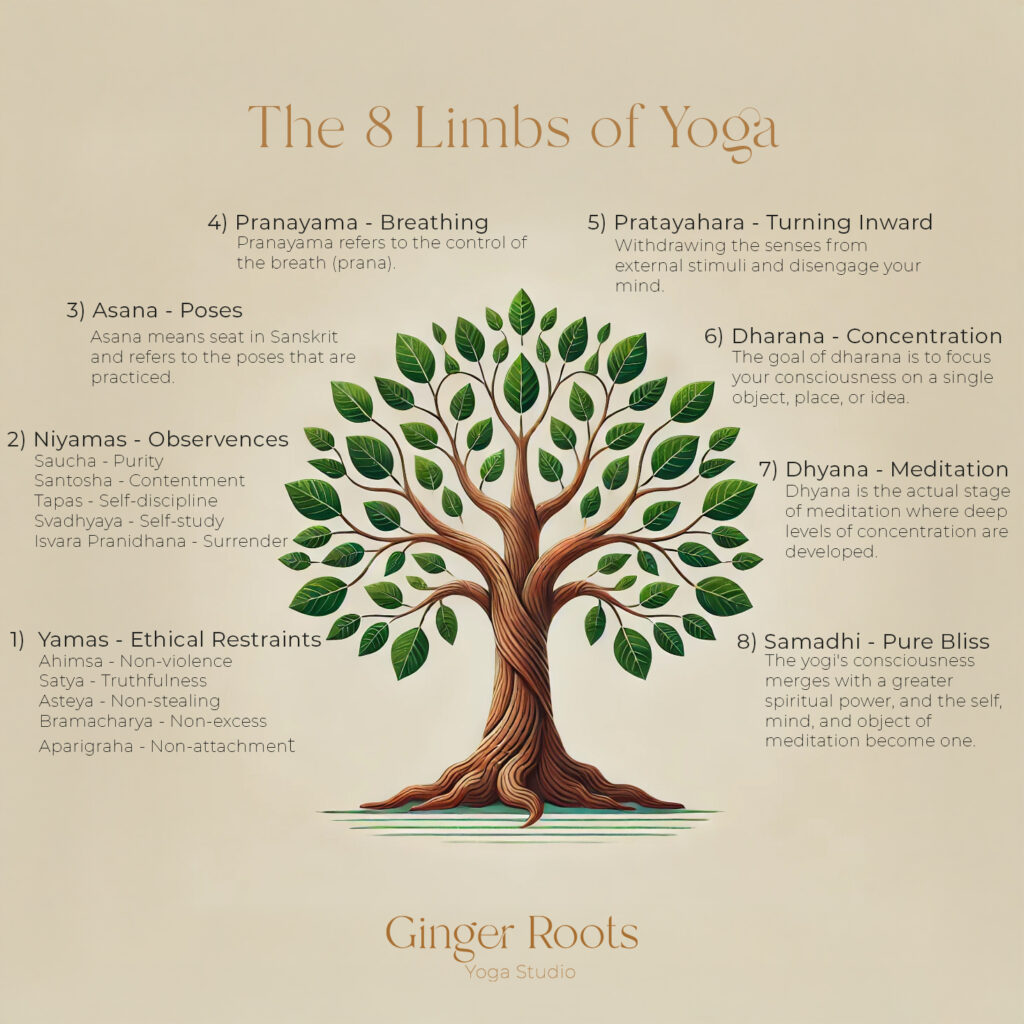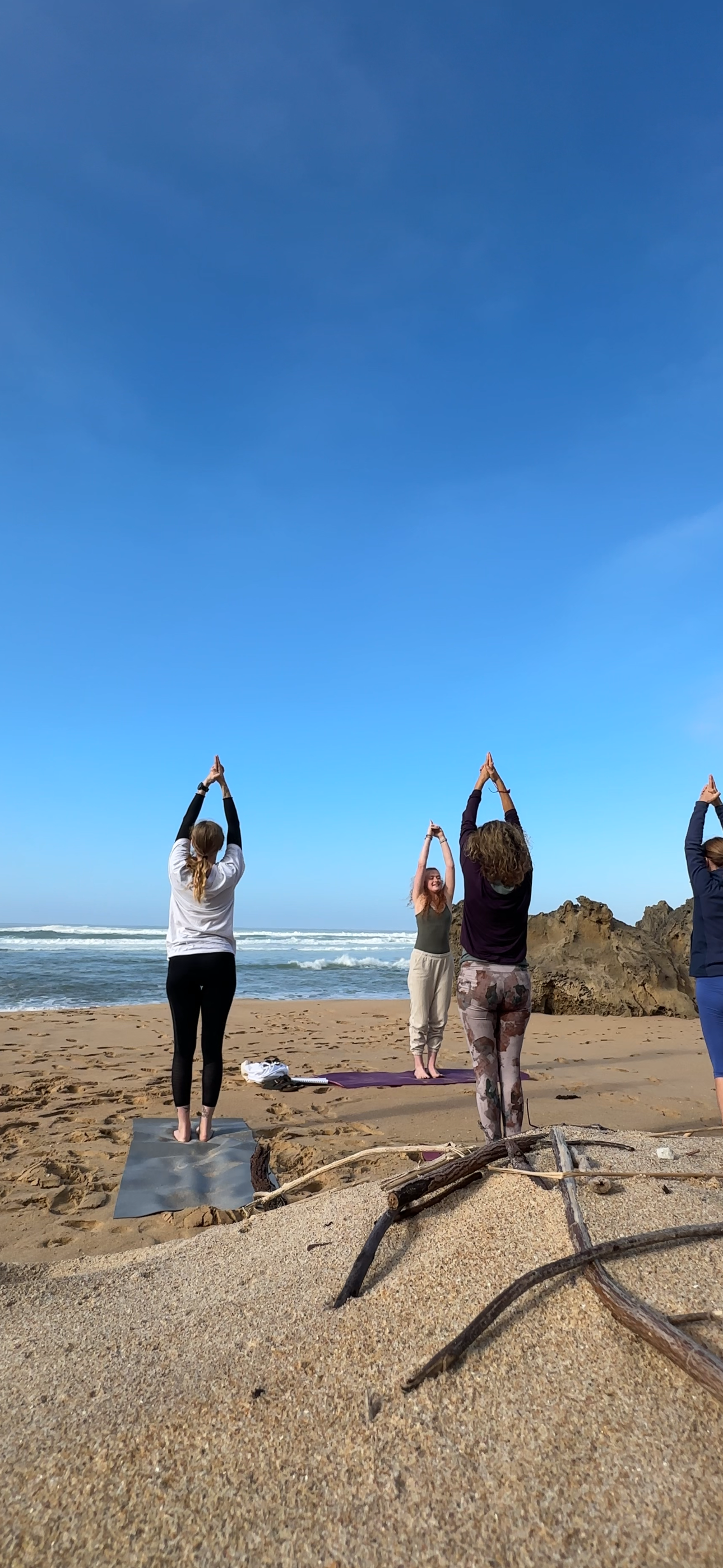The 8 Limbs of Yoga: A Path to Wholeness
When I embarked on this path, I quickly realized that yoga was more than physical postures with some meditation. I began noticing what I feel on my mat is like my life beyond the four corners of it.
Yoga is a holistic practice that paves the way for self-discovery, inner peace and ultimately, enlightenment.
The practice of yoga is rooted in an ancient text known as “The Yoga Sutras of Patanjali”. The sutras are a collection of 196 short verses compiled by Patanjali around 200 BCE- 400 CE. Within this, the 8 Limbs of Yoga are outlined and serves as our roadmap for living a purposeful life. Each limb is significant to the path of self-discovery and spiritual growth.
What are the 8 Limbs of Yoga?
The 8 Limbs of Yoga are a set of practices that help us cultivate a more mindful, balanced and connected life – both on and off the mat. They offer a path to living in a state of yoga, or union.
These include:
- Yamas – Ethical Restraints
- Niyamas – Observences
- Asana – Physical Postures
- Pranayama – Breath Control
- Pratyahara – Withdrawal of the Senses
- Dharana – Concentration
- Dhyana – Meditation
- Samadhi – Enlightenment

1. Yamas – Ethical Restraints
The yamas are moral guidelines that help us interact harmoniously with the world around us. They include:
- Ahimsa (Non-violence): Practicing kindness and compassion toward all beings.
- Satya (Truthfulness): Speaking and living in truth.
- Asteya (Non-stealing): Cultivating honesty and integrity.
- Brahmacharya (Moderation): Exercising self-restraint in all aspects of life.
- Aparigraha (Non-possessiveness): Letting go of material attachments and desires, practicing detachment.
2. Niyamas – Observences
The niyamas focus on self-care and personal growth:
- Saucha (Purity): Keeping the body, mind and surroundings clean.
- Santosha (Contentment): Cultivating gratitude and acceptance.
- Tapas (Discipline): Developing inner strength and determination.
- Svadhyaya (Self-study): Seeking knowledge and self-awareness.
- Ishvarapranidhana (Surrender): Trusting in a higher power or the universe.
3. Asana – Physical Postures
Western society defines yoga as a workout. However, the asanas (physical postures), prepare the body for meditation by promoting flexibility, strength and balance. The ultimate goal is to cultivate stillness and ease in both body and mind.
4. Pranayama – Breath Control
Pranayama involves breath regulation techniques that enhance vitality and mental clarity. Practices such as Nadi Shodhana (alternate nostril breathing) and Ujjayi (ocean breath) help calm the nervous system and deepen the connection between body and mind. If this interests you, read more about it here.
5. Pratyahara – Withdrawal of Senses
This practice teaches us to turn our focus inward, detaching from external distractions. If you have attended yoga at your local gym, you might do this without thinking about it. When you hear weights being thrown around and music coming from the studio and you withdraw from it, that is Pratayahara. By withdrawing the senses, we create space for deeper self-reflection and mindfulness.
6. Dharana – Concentration
Dharana is the practice of focused attention – something that in todays day and age we struggle to practice. It involves directing the mind toward a single point or Drishti – this could be a mantra, breath, or object.
7. Dhyana – Meditation
Meditation is a state of uninterrupted awareness. Through regular practice, we develop a profound connection to the present moment which leads to inner peace and heightened intuition.
8. Samadhi – Enlightenment
The final limb, samadhi, is the state of blissful union with the universe. It is the culmination of all yogic practices, where the ego dissolves and one experiences pure awareness and ultimate liberation.
Bringing the 8 Limbs of Yoga Into Daily Life
The 8 Limbs provide us with a structured path, however, yoga is not about perfection, it is about practice. Integrating small aspects such as mindful movement, ethical living or meditation can lead to profound transformation. Yoga is not something we do, it is a way of being. I highly recommend reading Judith Hanson Lasater’s book, “Living your Yoga”. Judith explores ways on how she applied yoga to her daily life and gives practical examples on how you can as well.
Start where you are and let the practice guide you. Progress over perfection.
Until next time,
Siobhan
- The Fire of Tapas: Finding Contentment & Letting Go
- The 8 Limbs of Yoga: A Path to Wholeness
- Unlocking the Power of Breath: An Introduction to Pranayama
- 4 Lessons I Learnt During My YTT

